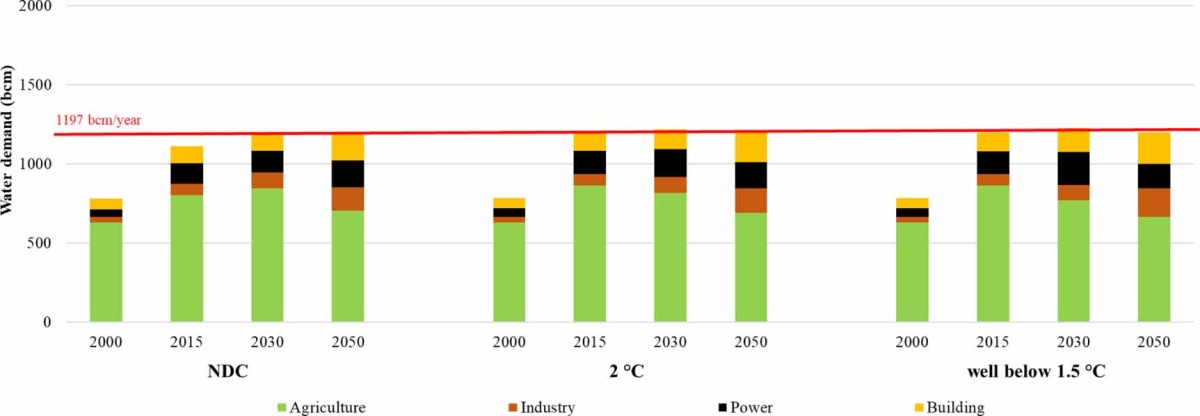Information of Paper
SDG implications of water-energy system transitions in India, for NDC, 2 °C, and well below 2 °C scenarios
Author: Saritha Sudharmma Vishwanathan, Amit Garg, Vineet Tiwari, Manmohan Kapshe, Tirthankar Nag
Year: 2021
Journal : Environmental Research Letters, Volume 16, Number 8
Keywords
SDG-NDC linkages, water-energy nexus, India, well below 2℃, integrated approach
Abstract
India needs to address the immediate concerns of water supply and demand, due to its increasing population, rapid urbanization, and growing industrialization. Additionally, the changing climate will influence water resources, which will subsequently impact the overall sectoral end-use demand patterns. In this study, we have integrated a water module with the existing bottom-up, techno-economic Asia–Pacific Integrated Model/End-use energy system model for India to estimate the future water demand in major end-use sectors under business-as-usual (BAU), nationally determined contribution (NDC), and low-carbon futures (2 °C and 'well below 2 °C') up to 2050. We also simulate the effects of water constraints on major sectors under different climate-change regimes. Our results show that water-intensive end-use sectors, specifically agriculture and power, will face major impacts under water-constrained scenarios. Over the period between 2020 and 2050, policy measures taken under the NDC scenario can cumulatively save up to 146billion cubic metres (bcm) of water, while low-carbon scenarios can save 20–21 bcm of water between 2020 and 2050, compared with BAU. In a water-constrained future, NDC and low-carbon futures can save 28–30 bcm of water. There is a need to increase the current water supply by 200–400 bcm. The marginal cost of installing dry cooling systems in the power sector is considerably higher than the cost and benefits of installing micro-irrigation systems with solar PV. Integrated policy coherence is required to achieve sustainable development goals, e.g., NDC and Paris Agreement goals, in both water and energy sectors. Concurrently, regulatory and economic instruments will play an essential role in improving resource-use efficiency at a systemic level, to reduce the overall water demand.

Fig. 1 Water demand in major sectors under BAU, NDC, and low-carbon futures

Fig. 2 Water demand in the water-constraint scenario in major sectors in the NDC and alternate futures.




